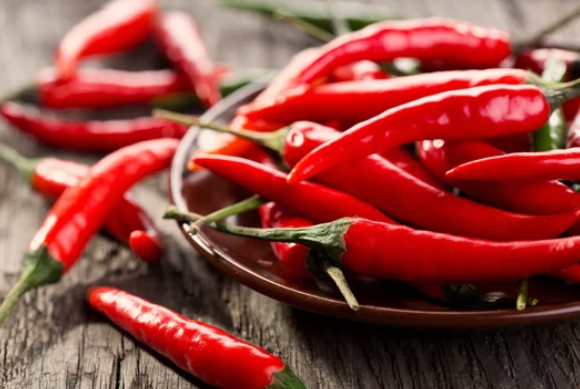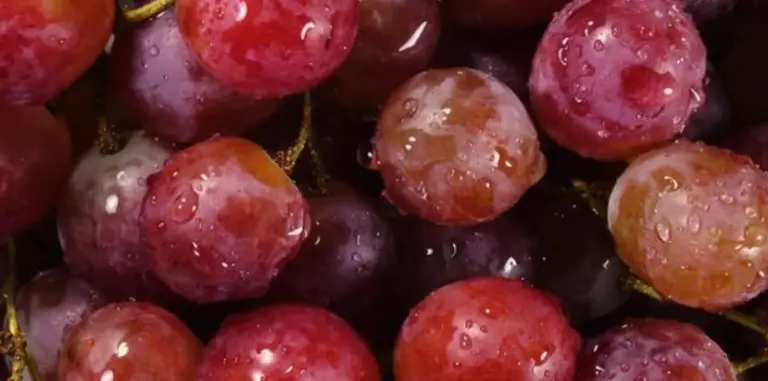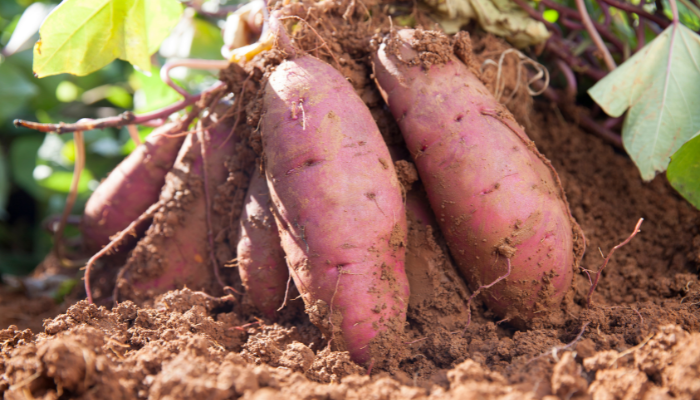White Mold on Banana Stem: Causes and Treatment
White mold on banana stem is a common issue that many people face when storing bananas. It is a type of fungus that grows on the surface of the banana stem and can spread quickly to other fruits in the bunch. The mold appears as a white, dusty substance that can be easily wiped away, but it can also be an indication of deeper issues with the fruit.
One of the main causes of white mold on banana stem is high humidity levels. When bananas are stored in a warm, moist environment, the mold can thrive and spread quickly. To prevent this, it is important to store bananas in a cool, dry place with good air circulation. Additionally, separating any bananas that show signs of mold can help prevent the spread of the fungus to other fruits in the bunch.
While white mold on banana stem is unsightly, it is not necessarily harmful to consume. However, it is important to inspect the fruit carefully before eating it. If the mold has spread to the fruit itself, it may be best to discard it. By taking the necessary precautions when storing bananas, it is possible to prevent the growth of white mold and keep your fruit fresh and healthy for longer periods of time.
What is White Mold?

White mold is a type of fungus that can grow on banana stems and fruits. It appears as a white, powdery substance that can spread quickly and damage the plant. The mold can also affect the quality of the bananas, making them inedible.
The mold grows in warm and humid conditions, and can be caused by a variety of factors, including poor air circulation, over-watering, and improper storage. Once the mold appears on the stem, it can quickly spread to other parts of the plant, including the fruits.
It is important to note that not all molds are harmful, but white mold on bananas should be taken seriously. While some types of mold can be safely removed from the surface of fruits and vegetables, white mold on bananas is usually an indication of deeper damage to the plant and should be discarded.
To prevent white mold from appearing on banana plants, it is important to maintain good growing conditions. This includes providing adequate air circulation, avoiding over-watering, and ensuring that the plant is stored in a cool, dry place.
If white mold does appear on a banana plant, it is important to take action quickly. This may involve removing infected parts of the plant or discarding the entire plant altogether. It is also important to clean and disinfect any tools or equipment that may have come in contact with the mold to prevent further spread.
Causes of White Mold on Banana Stem

Bananas are a popular fruit worldwide, and they are susceptible to various diseases, including mold. White mold on banana stems is a common problem that affects banana plants. This section will discuss the causes of white mold on banana stems.
Environmental Factors
Environmental factors play a crucial role in the development of white mold on banana stems. High humidity, poor air circulation, and low light intensity are some of the factors that promote the growth of white mold. Additionally, the presence of organic matter, such as dead leaves or other plant debris, can provide a breeding ground for mold spores.
Pathogens
Pathogens are another cause of white mold on banana stems. Several fungal species can cause white mold, including Fusarium oxysporum, Sclerotium rolfsii, and Rhizopus stolonifer. These fungi can infect the banana plant through wounds or injuries in the stem, such as cuts or scratches. Insect pests like mealybugs and aphids can also create wounds on the stem, which can provide an entry point for mold spores.
To prevent white mold on banana stems, it is essential to maintain proper environmental conditions, including adequate air circulation, light intensity, and humidity levels. Additionally, removing dead plant debris and controlling insect pests can help reduce the risk of mold infection. If mold is already present, it is best to remove the affected parts of the plant to prevent the spread of the disease.
Signs and Symptoms of White Mold

White mold on banana stems can be identified by a few key signs and symptoms. These include:
- White, cotton-like growth on the stem: The most obvious sign of white mold is the growth of white, cotton-like fuzz on the stem of the banana plant. This growth can spread quickly and cover the entire stem if left untreated.
- Soft, mushy spots on the fruit: White mold can also cause soft, mushy spots to form on the fruit itself. These spots may start out small but can quickly grow in size and affect the entire fruit.
- Foul odor: As white mold grows and spreads, it can emit a foul odor that is often described as musty or earthy. This odor can be particularly strong in areas where the mold is concentrated.
- Discoloration: In some cases, white mold can cause discoloration on the stem or fruit. This may appear as brown or black spots or streaks, and can be a sign that the mold has been present for some time.
If you notice any of these signs or symptoms on your banana plant or fruit, it is important to take action as soon as possible to prevent the mold from spreading further.
Impact on Banana Plant
White mold on banana stem can have a significant impact on the health and productivity of the plant. The mold can spread quickly and cause damage to the stem, leaves, and fruit. It can also attract pests and insects, further compromising the plant’s health.
One of the main concerns with white mold on banana stem is that it can inhibit the flow of nutrients and water to the plant. The mold can block the vascular tissue in the stem, preventing the transport of essential nutrients and water to the leaves and fruit. This can lead to stunted growth, yellowing of the leaves, and reduced fruit production.
In addition to affecting the plant’s growth and productivity, white mold on banana stem can also make the fruit unsafe to eat. Moldy fruit can contain harmful toxins that can cause illness or allergic reactions in humans. As such, it is important to remove any moldy fruit from the plant as soon as it is detected.
Preventing white mold on banana stem is essential to maintaining the health and productivity of the plant. This can be achieved through proper pruning and maintenance, as well as by ensuring that the plant is grown in a suitable environment. Keeping the plant well-ventilated and avoiding excessive moisture can also help to prevent the growth of mold.
Prevention Strategies
Cultural Practices
Preventing the growth of white mold on banana stems can be achieved through cultural practices. Here are some tips to follow:
- Proper Hygiene: Maintaining proper hygiene is critical in preventing the growth of mold. Ensure that you wash your hands before handling bananas or any other fruits. Clean and disinfect surfaces and tools used for handling bananas regularly.
- Proper Storage: Store bananas in a cool, dry place and avoid stacking them on top of each other. This helps to prevent moisture buildup, which is a breeding ground for mold.
- Inspect Bananas Regularly: Regularly inspect bananas for any signs of mold growth, especially on the stem. If you notice any mold, discard the banana immediately.
- Separate Infected Bananas: If you notice any bananas with mold, keep them separate from the rest to prevent the spread of mold to other bananas.
Chemical Control
Chemical control is another way to prevent the growth of white mold on banana stems. Here are some chemicals that can be used:
- Fungicides: Fungicides can be used to control the growth of mold on bananas. However, it is important to note that some fungicides may be harmful to humans and the environment.
- Baking Soda: Baking soda is a natural fungicide that can be used to control the growth of mold on bananas. Mix a tablespoon of baking soda with a quart of water and spray it on the bananas.
- Vinegar: Vinegar is another natural fungicide that can be used to control the growth of mold on bananas. Mix equal parts of water and vinegar and spray it on the bananas.
It is important to note that chemical control should be used as a last resort and only after other prevention strategies have been exhausted.
Treatment Options
When it comes to treating white mold on banana stems, there are two main options: biological control and chemical treatment.
Biological Control
Biological control involves the use of natural predators or organisms to control the spread of mold. One effective method is the use of Trichoderma, a type of fungus that competes with the mold for nutrients and space. Trichoderma can be applied to the soil or sprayed onto the banana stems to prevent mold growth.
Another option is the use of Bacillus subtilis, a type of bacteria that produces enzymes that break down the mold. Bacillus subtilis can be applied to the soil or sprayed onto the banana stems to prevent mold growth.
Chemical Treatment
Chemical treatment involves the use of fungicides to kill the mold. One common fungicide used for treating white mold on banana stems is thiabendazole. Thiabendazole can be applied to the banana stems or mixed with water and sprayed onto the banana plants.
It is important to note that chemical treatment should be used as a last resort, as it can have negative effects on the environment and may also affect the taste and quality of the bananas. It is recommended to follow the instructions carefully and wear protective gear when applying fungicides.
In summary, both biological control and chemical treatment can be effective methods for treating white mold on banana stems. However, it is important to weigh the pros and cons of each method and choose the best option based on the specific situation.
Conclusion
In conclusion, white mold on banana stems is a common issue that can affect the quality of the fruit. Mold can develop due to high humidity and poor ventilation, which creates an ideal environment for mold growth. However, it is possible to prevent mold growth by following some simple steps, such as storing bananas in a well-ventilated area with a humidity level of 55-65%.
If you notice mold on a banana stem, it is important to remove the affected fruit immediately to prevent the spread of mold. Wrapping the unaffected stems with cling film or aluminum foil can also help prolong the shelf life of the fruit.
It is essential to note that mold on banana stems is not always harmful. Overripe bananas are still safe to eat, even if they have mold on the stem. However, if the fruit has extensive browning or mold on the skin, it is best to discard it.
Overall, by taking the necessary precautions to prevent mold growth and removing affected fruit promptly, you can enjoy fresh and healthy bananas for an extended period.
Frequently Asked Questions
Is it safe to eat a banana with white mold on the stem?
No, it is not recommended to eat a banana with white mold on the stem. Mold produces harmful substances like mycotoxins, which can cause food poisoning. Upon consumption, one may suffer from abdominal discomfort followed by nausea, vomiting, and fever. It is best to discard any bananas that show signs of mold.
What causes white mold to grow on banana stems?
White mold on banana stems is caused by a fungus called Fusarium. This fungus thrives in warm and humid conditions, making banana plants in tropical regions particularly susceptible to it. Poor ventilation, excessive moisture, and overcrowding can also contribute to the growth of white mold on banana stems.
How can I prevent white mold from growing on my banana plants?
To prevent white mold from growing on banana plants, it is important to maintain proper ventilation and avoid overcrowding. Regularly inspecting the plants for any signs of mold and promptly removing any affected parts can also help prevent the spread of white mold. Additionally, ensuring that the plants receive adequate sunlight and are not overwatered can help prevent the growth of white mold.
What are the symptoms of white mold on banana plants?
The symptoms of white mold on banana plants include white or grayish mold growth on the stem, leaves, or fruit. The affected parts may also become soft and mushy, and emit a musty odor. In severe cases, the mold can cause the plant to wilt and die.
Can white mold on banana stems spread to other plants?
Yes, white mold on banana stems can spread to other plants. The spores of the fungus can easily be carried by wind, water, or insects and can infect other plants in close proximity. It is important to isolate any infected plants and promptly remove them to prevent the spread of the mold.
How should I dispose of banana plants with white mold?
Banana plants with white mold should be promptly removed and disposed of properly. It is important to avoid composting the infected plants, as the spores of the fungus can survive in the compost and infect other plants. The best way to dispose of the infected plants is by burning or burying them.







